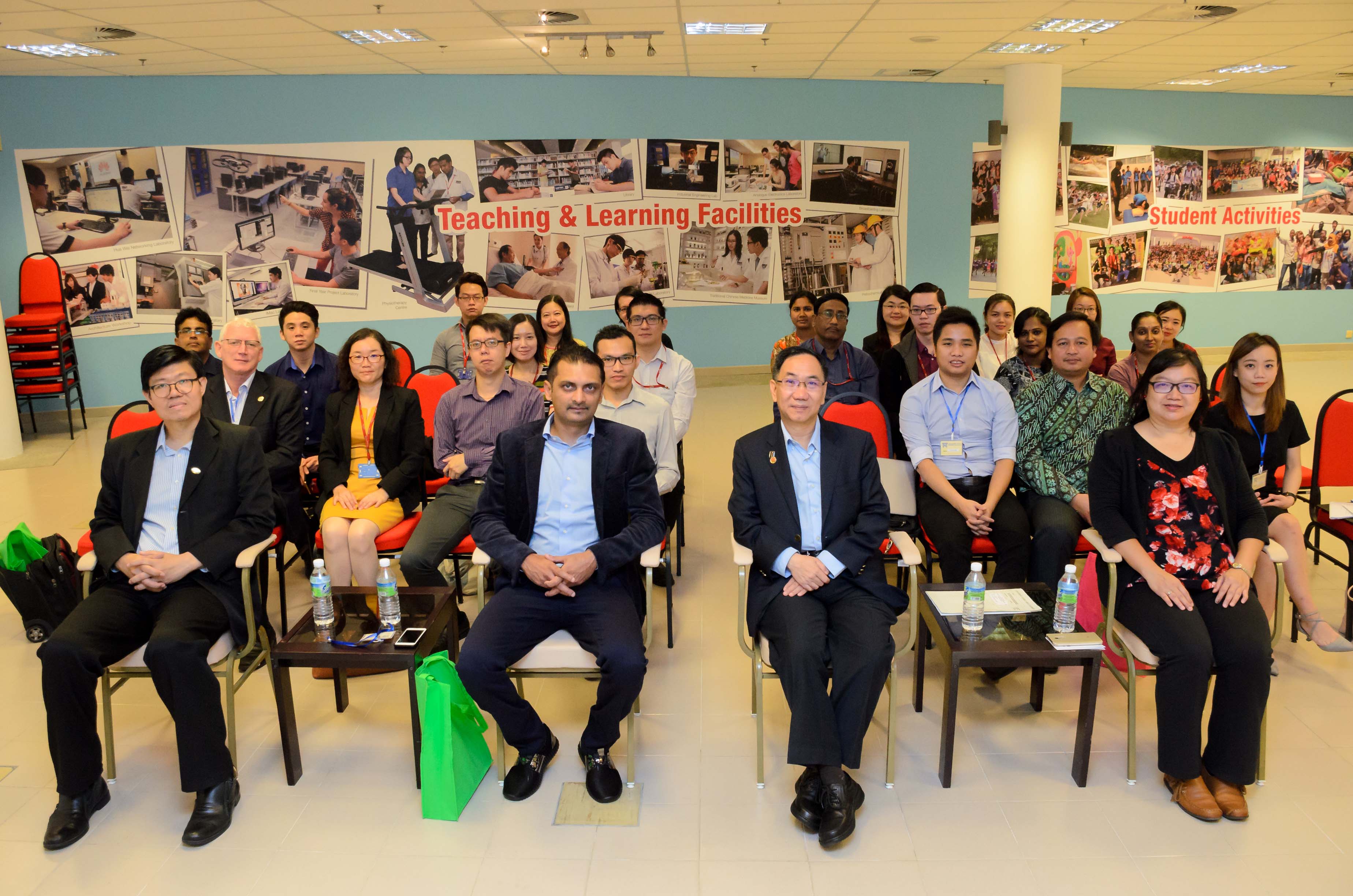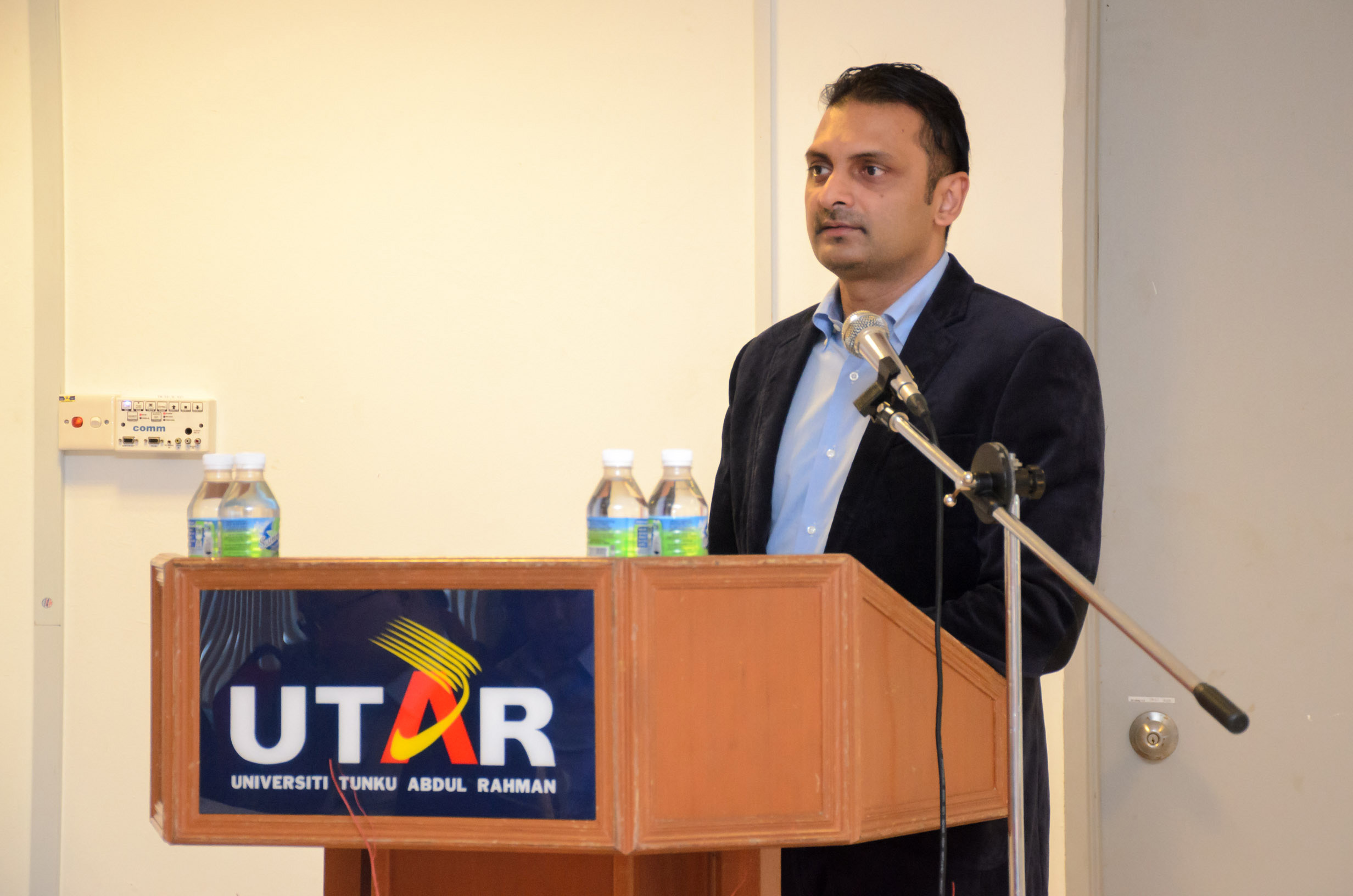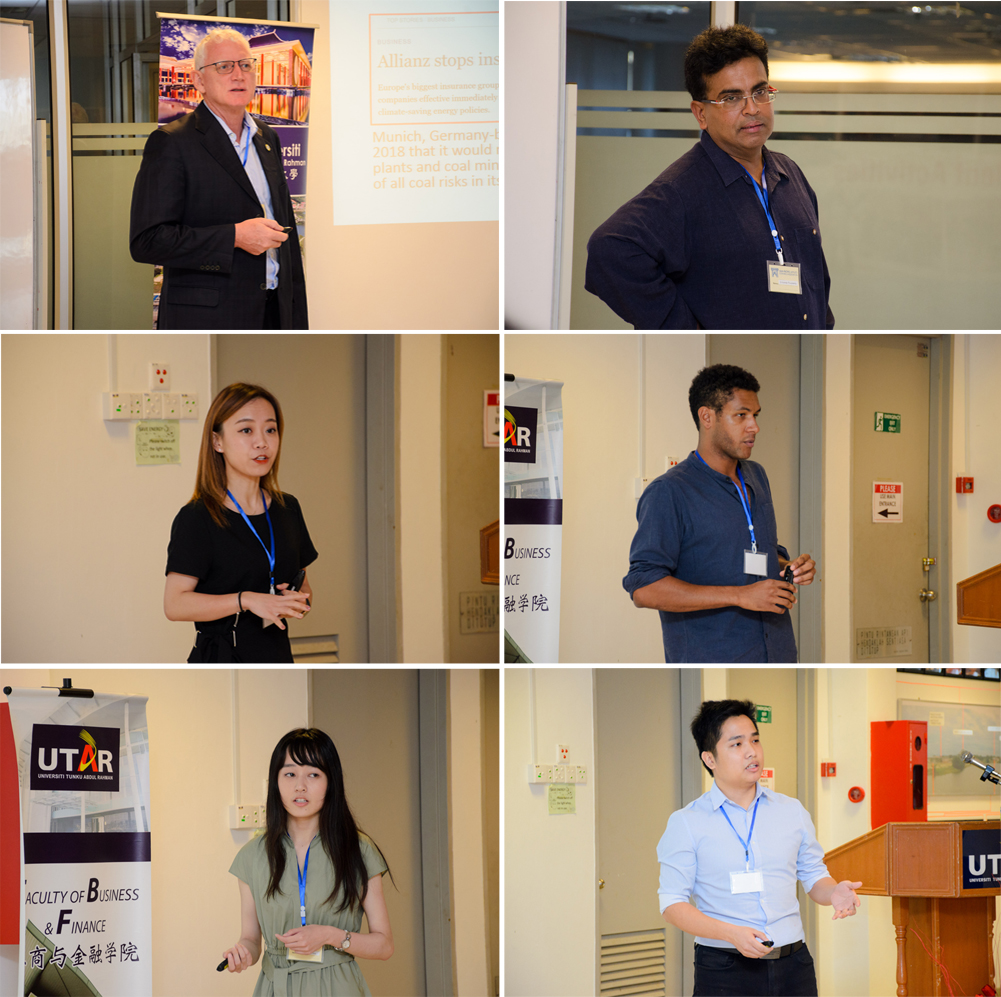
Following the success of the 3rd Applied Financial Modelling Conference held in November 2017, UTAR’s Faculty of Business and Finance (FBF) and the Asia-Pacific Applied Economics Association (APAEA) once again successfully organised the 5th Applied Financial Modelling Conference at UTAR Kampar Campus on 25 May 2018.

The VIPs with the presenters and researchers
Aimed to create a strategic platform for researchers and academics from both local and international arena to share research findings, the conference also served as a platform to exchange insights on the importance of commodity markets in financial and macroeconomic stability.
Themed ‘The Importance of Commodity Markets in Financial and Macroeconomic Stability’, the conference was truly a mutual assent and served as an important platform for the research participants to interact, present and share their research work. It saw the participation of about 20 academics comprising local and foreign researchers from Australia, France and China.

Prof Chuah emphasising on the objective of the conference
Delivering his welcome remarks at the opening of the conference, UTAR President Ir Prof Academician Dato’ Dr Chuah Hean Teik said, “It is a pleasure to see UTAR’s Faculty of Business and Finance (FBF) joining hands with the Asia-Pacific Applied Economics Association (APAEA) to organise the 5th Applied Financial Modelling Conference, hence creating a strategic platform for not only local academics but also those from Australia, China and even France to come forward to share research findings and insights.”
He added, “I also understand that prior to this one-day conference, the 3rd Applied Financial Modelling Conference was also held here in November 2017 in conjunction with the launch of APAEA in Malaysia. Thank you to APAEA for your trust in UTAR as a collaborative partner to jointly organise academic events as such. Well done also to the Organising Committee for ensuring the conferences are well organised and enriching, which also indirectly promotes the University to others.”

Prof Paresh stressing the importance of quality researches
In his address, APAEA President Prof Paresh said, “First of all, I would like to welcome all of you to this significant conference. Thank you UTAR for joining hands with APAEA once again to organise the conference in Malaysia. Thank you to the Organising Committee for putting a lot effort in organising this conference successfully for the past two times. Applied Financial Modelling Conference is an annual programme for APAEA. APAEA has been organising this conference since 2016 in China and almost 90% of our participants were Chinese from China. We realise that apart from China, there are many quality researchers in Malaysia and other part of Asian countries, therefore, we came up with the idea to organise more similar conferences to share the findings among the researchers. APAEA decided to use Malaysia as the purpose to reach out to more non-Chinese researchers and to focus on more quality researches and papers. Joining hands with a progressing university like UTAR is indeed a great opportunity for us to have more researchers from different parts of the world.”
He added, “However, there are couples of challenges that we faced since our first conference in Malaysia. The first challenge that we have to work on is the time of the conference. When do we need to set the conference? I think this is something that need to be discussed in order to set a suitable time frame for researchers. The second challenge is more about the vision of the association. APAEA would like to organise a conference which brings unique topics to be discussed. With that, our 5th Applied Financial Modelling Conference covered topics on energy finance; econometric methods and forecasting.We would like to encourage more discussions and interactions among the researchers. So that more comments and inputs can be shared. It will also open a platform to have an innovative discussion and interaction.”
Structured as a key initiative in providing a significant opportunity for researchers and academics to present their research findings, the conference saw the submission of about 10 papers. The conference looked deeper and shed lights better on how commodity markets, especially those driven by volatile commodity prices, oil price shocks and the importance of the gold market, affect the financial market performance, macroeconomic stability and economic growth.
The conference also saw a total of seven prolific researchers, namely Prof Jonathan Batten from Universiti Utara Malaysia, Dr Di Mo from RMIT University, Dr Kannan Thuraisamy from Deakin University, Fazle Rabbi from Western Sydney University, Dr Alexandre Henry from France’s University of Lorraine, Dr Fang Liang from Peking University and Dr Dinh Phan from Monash University Malaysia who delivered enriching and inspiring papers, namely “Dynamic Comovements among Crude Oil and Commodity Markets”, “The Information Transmission between the Chinese and the US Agricultural Commodity Markets”, “Regime-dependent Bond Return Predictability of Energy Firms: A Cross-country Analysis”, “Dynamics of Commodity Prices and Australia’s Macroeconomy”, “Connecting Natural Resource Curse and Growth Theories in Africa”, “How to Disentangle Short and Long-term Effects of Natural Resource Dependence?” and “The Predictive Power of Macroeconomic Uncertainty for Commodity Futures Volatility, Terrorist Attacks and Crude Oil Price” respectively to the participants in finding novel solutions to some existing problems.

Clockwise from top left: Prof Jonathan, Dr Kannan, Dr Alexandre, Dr, Dinh Phan, Dr Fang Liang and Dr Di Mo
Among the topics discussed at the 5th Applied Financial Modelling Conference were Commodity markets forecasting, the role of oil prices in shaping commodity market trading and performance, implications of gold market for financial and economic systems, financial econometrics models applied to understanding commodity markets, GVAR models that capture the effects of commodity markets, role of commodity markets in forecasting macroeconomic indicators, commodity market and economic growth, CGE models that explore the role of commodities in macroeconomic performance, commodity market risks, importance and transmission of shocks to commodity markets, commodity market efficiency and implications for trading, commodity market and stock return relations (price discovery and predictability), comparison of commodity markets with other markets and commodity markets and Islamic financial systems.
© 2019 UNIVERSITI TUNKU ABDUL RAHMAN DU012(A).
Wholly owned by UTAR Education Foundation Co. No. 578227-M LEGAL STATEMENT TERM OF USAGE PRIVACY NOTICE